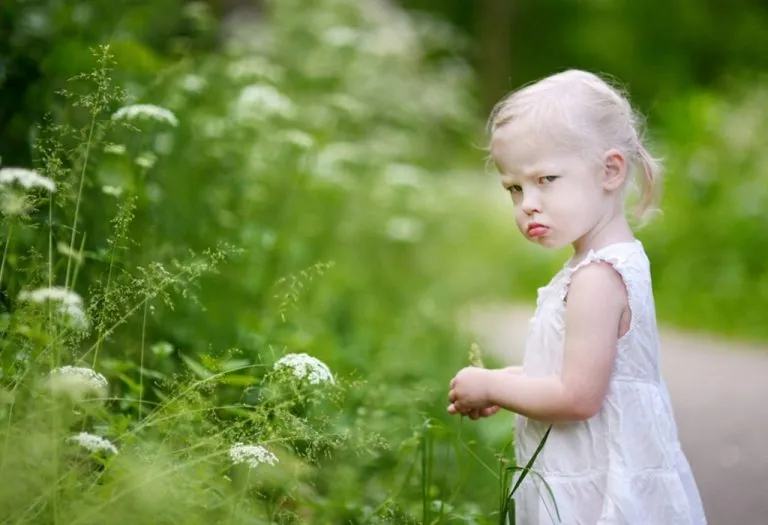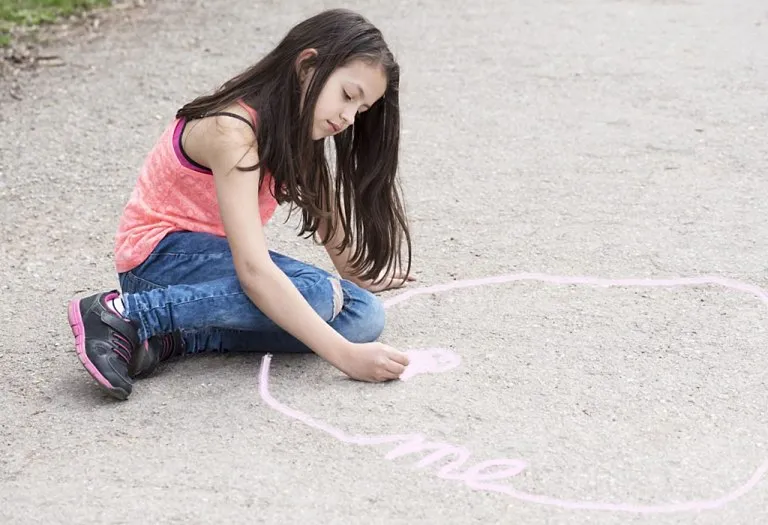Attention Seeking Behaviour in Children – Causes & Solution

- What Is Attention-Seeking Behavior in a Child?
- Causes of Attention-Seeking Behavior in Children
- Signs of Attention-Seeking Behavior in Children
- How Much Attention Is Enough for Your Child?
- Types of Attention
- Emotional Issues Behind Your Child’s Attention-seeking Behavior
- How to Deal With Attention-seeking Behavior in Kids
- Dos and Don’ts for Parents of Children with Attention-Seeking Behaviors
- FAQs
Attention is a basic human requirement which arises from attachment. Thus, every child craves attention, especially from their parents. Due to today’s culture of work and hustle, most parents are unable to spend quality time with their children. As a result, a child can feel left out, leading to a sense of emotional deprivation. Feeling left out often triggers attention-seeking behavior as the child tries to reclaim the connection they feel is missing. Over time, if this need remains unmet, it can escalate into extreme attention-seeking behavior in a child, where they might engage in increasingly disruptive or even self-destructive actions just to get noticed. Such behavior is often a cry for help, signaling that the child is in desperate need of attention, reassurance, and validation. Read on to learn more about attention-seeking behavior in children, why it occurs, and how to effectively address and mitigate it.
What Is Attention-Seeking Behavior in a Child?
Have you ever faced problems with your child, such as lying down in the shop because he wants a specific toy, or causing a scene at the park amidst other siblings by stealing ice cream, or bullying other kids? These are examples of attention-seeking behavior, and sometimes it goes to an extreme, to the point where you get glares and glances from outsiders and other parents.
Causes of Attention-Seeking Behavior in Children
Attention-seeking behavior in children can stem from various underlying causes, often rooted in their emotional and psychological needs. Understanding these causes is essential for parents to address the behavior effectively and foster a healthier relationship with their child. Here are some common causes:
1. Lack of Quality Time with Parents
When children feel that they are not receiving enough attention or quality time from their parents, they may resort to attention-seeking behaviors to fill that void. This need for connection is often a child’s way of expressing their desire for more interaction, love, and support.
2. Inconsistent Discipline
Inconsistent discipline can confuse children, leading them to act out in search of boundaries. If a child receives mixed signals—such as being ignored sometimes and punished at other times for the same behavior—they may engage in attention-seeking actions as a way to test limits and understand what is acceptable.
3. Emotional Insecurity
Children who feel emotionally insecure or lack self-confidence may seek attention as a way to reassure themselves that they are valued and loved. This behavior can manifest in various forms, such as exaggerating situations, feigning illness, or causing disruptions to ensure they are noticed.
Signs of Attention-Seeking Behavior in Children
Attention-seeking behavior in children can manifest in various ways, often as a response to unmet emotional needs. Recognizing these signs early can help parents address the underlying issues and provide the necessary support. Here are some common signs to look out for:
- Faking illnesses to get some of your time
- Causing drama or throwing tantrums at home or in public settings
- Causing harm to others and trying to play hero
- Creating problems that make one parent argue with the other
- Playing the victim by magnifying the proportion of simple, everyday problems
- Showing that they are super busy and completing everything on time, or before
How Much Attention Is Enough for Your Child?
How much attention is enough for your child will depend on the child’s personality, behavior, and daily routine. Your child may feel satisfied with the attention he receives at home, but may be disappointed in the classroom, in which case, you may need to talk to the school counsellor or concerned teachers to make room for opportunity to shine by asking questions and encouraging participation in group discussions.
Giving your child 100% of your attention at home for at least some time of the day, fully and uninterrupted, is highly recommended. The reason behind this is if you don’t spare your attention for your children, they may end up causing temper tantrums or throw fits in other settings to cause a scene.
Types of Attention
There are different types of attention-seeking behaviors. However, just like behaviors, there are ways of approval and rewards that come with adult attention. They are listed below.
1. Positive Attention
If you find your child doing something good, give him words of encouragement, or reinforce that action with positive rewards. This is called positive attention. A pat on the back, a gentle hug, words of praise, and small smiley doodles or notes in their notebooks or lunch boxes work just as well.
2. Negative Attention
When your child misbehaves, and you get upset as a result, you might scold him. This attention that you are now giving your child is called negative attention. This can be in the form of scoldings, lectures, or punishments. If your child is actively seeking attention from you, this type of negative attention will not serve to reduce instances of his misbehavior, but will instead increase it. Thus, it will turn into a cycle of constant mischief and constant negative attention from you.
3. No Attention
No attention is when you aren’t paying attention when your child is doing something good; it means that you pay attention only when your child is misbehaving, and you are missing his positive-attention behavior. For example, two brothers who are usually messy or destructive in behavior are quietly watching TV together. Their parents don’t acknowledge or respond to this positive change. This is an example of paying no attention. On the other hand, if the brothers do misbehave again, the parents are quick to notice and respond with scolding.

Emotional Issues Behind Your Child’s Attention-seeking Behavior
The emotional issues or causes of attention-seeking behavior in children are –
- Your child has trouble making friends at school.
- He doesn’t get enough attention from you at home.
- He feels lonely or left out amidst other siblings.
- He feels ignored due to parents being busy or working too much.
- He doesn’t get enough attention at school or in other social settings.
- Past experiences or trauma.
How to Deal With Attention-seeking Behavior in Kids
Here are tips for dealing with attention-seeking behavior, or learning how to stop this behavior in children –
1. Give More Positive Attention
Help your kids with kitchen chores or praise them for spending time with themselves quietly, like watching TV or drawing. If they have talents, ask them to practice them and praise them for putting effort into them.
2. Ignore Bad Behavior
Bad behavior comes with no rewards. Make that known through your ignorance to your child’s whines and tantrums. In time, he will realise that, and slowly change his behavior for the better.
3. Give Options
Giving your child options will make them feel seen by you. Providing options also helps if he throws tantrums during simple tasks, such as dressing himself, or eating his meals. You can ask him what he would like to wear today, or what dessert he would like to eat after he has finished his vegetables.
4. Give Alone Time
Set aside 5 to 10 minutes of uninterrupted alone time that your child can spend with you and your spouse each, separately. Before bedtime, or any time that both you and your spouse can freely spare, can work.
Dos and Don’ts for Parents of Children with Attention-Seeking Behaviors
Below, we have some dos and don’ts of dealing with attention-seeking behavior in kids –
Dos
- Try to ignore: If your child is screaming or yelling or simply causing a ruckus verbally, don’t be afraid to tell him that he won’t be given chocolate or extra TV time because of his actions, and that you’ll hear him out once he calms down.
- Create a rules list: List out the rules of the house, and consequences for breaking each. For screaming, it could be 10 minutes cut from normal TV time, and for making a mess, it could be going to bed early, and so on. Create this chart with your kid, and hang it up at eye level in a place where he can see it regularly. Stick to this chart no matter what, and you’ll slowly notice your child making changes in his behavior.
- Give attention mindfully: This is not to say that the rules cut out attention from your side. Come together as a family for dinners, conversations, and bedtime reading. Do little things that bring joy to your child’s daily life, but remember to enforce the rules and be consistent about playing out the consequences when the rules are broken. Your child will only take the rules seriously if you’re consistent and serious from your end.
Don’ts
- Scream: It’s natural to feel angry or frustrated, but never lash out at your kids by screaming or losing emotional control from your end. Whenever you feel like you’ll lose your cool, feel free to move away and take a break. Don’t be afraid to tell your child that you’re taking a break because you’re not in a state to handle his whining currently, and will be back after a few minutes after he quietens down. Practice deep breathing exercises, and meditate for a few minutes every day to be calm and composed.
- Guilt-trip your kids: Don’t make them feel guilty, or emotionally blackmail them. If you feel out of it, just tell your child you’re tired after a day’s work, and won’t be able to resolve his situation today since you don’t have the energy to do so. Make it clear that you won’t be able to keep him company on that day if he continues whining or yelling, and move out of the room instead. Even kids have feelings; they will surely understand.
- Think that it’s a clinical disorder: Most parents think that their kids’ temper tantrums are linked to ADHD or other medical disorders. Don’t assume that. Sometimes it’s perfectly normal for kids to scream and yell, since they are at that stage of development in their lives. However, if your child is cutting himself or participating in dangerous situations, or causing harm, then seek out a medical specialist for help.
FAQs
1. Can attention-seeking behavior in children be a sign of an underlying mental health issue?
Yes, in some cases, persistent attention-seeking behavior in preschoolers can be a symptom of underlying mental health issues, such as anxiety, depression, or even a developmental disorder like ADHD. It’s important to observe other behaviors and consult a healthcare professional if you suspect there might be deeper concerns.
2. How does birth order influence attention-seeking behavior?
Birth order can play a role in attention-seeking behavior. For instance, middle children may feel overlooked compared to their older and younger siblings, leading them to seek attention in different ways. Similarly, the youngest child might display attention-seeking behavior to compete with older siblings for parental focus.
3. Can attention-seeking behavior in children affect their social relationships?
Yes, attention-seeking behavior can negatively impact a child’s social relationships. Peers may find the behavior annoying or disruptive, leading to social isolation or difficulty forming lasting friendships. It’s important for parents to guide their child in developing healthier ways to interact with others.
4. How does screen time influence attention-seeking behavior in children?
Excessive screen time can contribute to attention-seeking behavior. Children who spend a lot of time on screens may struggle to engage in real-life social interactions, leading them to seek attention in disruptive ways. Limiting screen time and encouraging more face-to-face communication can help mitigate this issue.
And, that’s it! Just try out the tips above, and keep these pointers in mind to fix attention seeking behavior in children in school and home, and we’re sure you’ll notice positive changes soon. And remember the magic word – time!
References/Resources:
1. Bosmans. G, Braet. C, Heylen. J, Raedt. R; Children’s Attentional Processing of Mother and Proximity Seeking; PLoS One; https://journals.plos.org/plosone/article?id=10.1371/journal.pone.0124038; April 2015
2. Downey. C, Crummy. A; The impact of childhood trauma on children’s wellbeing and adult behavior (European Journal of Trauma & Dissociation); Science Direct; https://www.sciencedirect.com/science/article/pii/S2468749921000375?via%3Dihub; February 2022
3. Hong. Y, Park. J; Impact of attachment, temperament and parenting on human development; Clinical and Experimental Pediatrics; https://www.e-cep.org/journal/view.php?doi=10.3345/kjp.2012.55.12.449; December 2012
4. Wagner. L; The Social Life of Class Clowns: Class Clown Behavior Is Associated With More Friends, but Also More Aggressive Behavior in the Classroom; Frontiers; https://www.frontiersin.org/journals/psychology/articles/10.3389/fpsyg.2019.00604/full; April 2019
5. Olofson. E, Schoppe-Sullivan. S; Same Behaviors, Different Outcomes: Mothers’ and Fathers’ Observed Challenging Behaviors Measured Using a New Coding System Relate Differentially to Children’s Social-Emotional Development; MDPI; https://www.mdpi.com/2227-9067/9/5/675; May 2022
6. Koepp. A, Watts. T, Gershof. E, Ahmed. S, et al.; Attention and Behavior Problems in Childhood Predict Adult Financial Status, Health, and Criminal Activity: A Conceptual Replication and Extension of Moffitt etal. (2011) Using Cohorts From the United States and the United Kingdom; American Psychological Association; https://www.apa.org/pubs/journals/releases/dev-dev0001533.pdf
Also Read:
Child Behavior Checklist
Bullying Behavior in Kids
Behaviour Charts for Children
Common Behavior Disorders in Children
Tips for Handling Negative Behaviour in Kids
Was This Article Helpful?
Parenting is a huge responsibility, for you as a caregiver, but also for us as a parenting content platform. We understand that and take our responsibility of creating credible content seriously. FirstCry Parenting articles are written and published only after extensive research using factually sound references to deliver quality content that is accurate, validated by experts, and completely reliable. To understand how we go about creating content that is credible, read our editorial policy here.
























